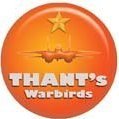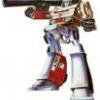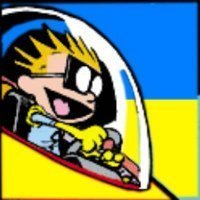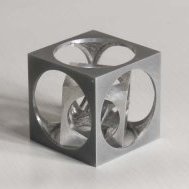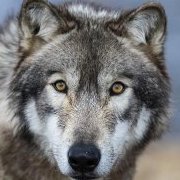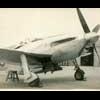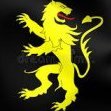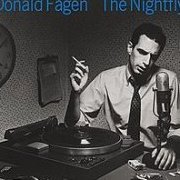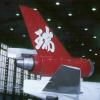Search the Community
Showing results for tags 'zvezda'.
-
TOR-M2/SA-15 Gauntlet Russian Anti-Aircraft Missile System (3633) 1:35 Zvezda HobbyPro Marketing A replacement for the SA-8 Gecko anti-aircraft missile system was requested by the Soviet Military in the mid-70s, and after a long development period, The TOR-M1 was finally accepted into service 10 years later. As with all things, upgrades followed until the M2 variant was developed, recently using the longer-range, more compact 9M338 missiles, stored vertically in the centre of the turret ready to be launched immediately, able to fire even whilst on the move under optimal conditions. Eight of the older 9M330 or 9M331 missiles can be launched from the TOR system, while sixteen of the newer 9M338 missiles can be carried in the same space, thanks to the compact size of the new design, increasing its effectiveness and reducing its down-time for reloads. The radar modules on the turret can provide targets and guide up to eight missiles at a time in later variants, and it can also communicate with the missiles after launch thanks to a small antenna on the vehicle that can update the missiles in-flight. The turret is mounted on a GM series tracked chassis made by Mytishchi Machine-Building Plant in a district outside Moscow, but the system can also be mounted on a wheeled chassis, and the same basic system is also capable of being mounted on a ship, with an amphibious variant in the pipeline at some point. It has seen extensive service in many of the conflicts around the world since it was taken into service in Russian and other countries, and sadly it is implicated in the shooting down of Ukraine International Airlines Flight 752 whilst in Iranian hands. The Kit This is a brand-new tooling from Zvezda, fresh off the presses in Russia, so it is a modern kit and has plenty of detail moulded-in. The kit arrives in a standard yellow-themed box with captive top lid, and inside are six sprues in grey styrene, plus two hull halves in the same colour. In addition, there is a small clear sprue, two different sizes of plastic mesh, the instruction booklet and a double-sided sheet of A5 printed with the decal options. The sprues have a shiny finish, with a good level of detail, including link and length tracks that have been created with the correct level of sag moulded-in. It is an exterior-only model, and there are no missiles to accompany it, which is a minor shame, but someone is bound to come up with an aftermarket block of resin to portray that area in much finer detail than is possible in styrene. Unusually for an AFV, construction begins with the turret, which is based upon a floor that has the turret ring moulded-in, with the bland upper turret installed and detailed with inserts on all sides to busy it up, plus the roof panel, which has the two missile compartment tops moulded into it, and equipment is placed within the cut-out at the rear that will form the base of one of the radar installations. To either side of the turrets are two additional panniers, which have sections of the larger mesh inserted into the angular ends, using a template that is printed next to the instructions. The large flat radar panel is made up with the dielectric panel at the front, which has a shallow convex bulge in the centre, to be fitted to the rear of the turret on some substantial hinges that fix to the rear corners. The framework for the other radar is then made up and attached to the rear of the large rectangular panel, which has the curved radar installed at the top, then is inserted onto the equipment that was installed earlier in the recess of the turret along with even more parts. The lower hull is then pulled from the box and outfitted with the suspension swing-arms, towing hooks and the two-part drive sprockets, to be joined by the paired road wheels and the four return rollers each side, leaving the idler wheels off until the tracks are ready to be put in place. As already mentioned, the tracks are link and length, with good detail and no ejector-pin marks to deal with, which is always nice. The long straight runs on the top and bottom are moulded as single parts, with shorter lengths for the diagonals and four curved sections that are made up from individual links by wrapping five or six links around the drive sprockets and idler wheels, applying glue and letting them set up. These curved sections are used to link the straight sections, with an additional single link between the front diagonal and bottom run, to break up the sharpness of the transition. The upper hull is a stepped panel with a cut-out in the central section ready to accept the turret later, but it first needs detailing with panels to bring the deck, which starts life as a series of blank-faced raised boxes, up to scratch with the highly detailed surfaces, adding the sloped glacis plate with clear windows, headlamps, and optional open or closed hinges for the window covers that are fitted later. The sides and rear bulkheads are joined to the lower edge of the deck, and another long piece of mesh is inserted into the narrow exhaust outlet, again using a nearby drawing as a template. To mate the two hull halves together, two narrow fender inserts are slotted into the sides of the lower hull, which join with the upper hull, accompanied by a lower glacis plate and a few details in the rear. The engine deck has more surface detail fitted next, including more mesh for one of the heat exchangers on the engine deck, an overhang on the right rear, plus three stowage boxes hanging over the back. At the front are fixed clear vision blocks for the crew with guards, sensors, hooks, a 2-man saw, a flat cover over the headlamps that supports a large angular box, a pair of styrene towing cables with moulded-in eyes, with another slung under the rear bulkhead and accompanied by rear mudguards, one of which was off the sprue in my example. Yet more detail is fitted to the upper hull in the shape of pioneer tools, trunking on the engine deck, a stowed ladder, rear lights, spare tracks and sensors, plus a pair of long textured panels that run down either side of the turret area. There are two completion options for this kit, as already mentioned. The first is with the radars and other equipment stowed for transport, and with the front windows open and the windscreen wiper blades installed. Alternatively, with the radars popped up ready for action, the two covers are installed lowered, thanks to the alternative hinge parts that will have been fitted earlier in the build. A few more small parts are dotted around the front of the deck, and that’s the model finished. Now for some paint. Markings There are two painting options included on the decal sheet, although with several of the numerals 0-9 on the sheet, pretty much any numerical code can be assembled. From the box you can build one of the following: Victory Parade Moscow, 2017 Khmeimim Air Base, Syrian Arab Republic The decals are well printed with a red band around the edge that is reminiscent of Begemot’s work, but that’s just my guess. The colours are dense, printing sharp, and what little registration there is on the two large Russian logos is good, with a satin carrier film cut close to the printed areas. The scan of the logo seems to have rendered it more red, when it looks more orange in the flesh, so please remember that. Conclusion It’s a very nicely moulded kit, with just the right amount of detail for an exterior model. The tracks are well-detailed and aren’t over-complex, which is always a bonus and shouldn’t dissuade even the most track-phobic modellers from picking one up for their stash. Keep up the good work Zvezda! Highly recommended. Available from all good model shops online or in actual buildings. Review sample courtesy of
-
Kit - Zvezda Paint - All Tamiya acylics Decals - Spares Extras - DEF Models kit-specific resin mantlet and aluminium barrel. So here' my first ever Zvezda kit which I started about six weeks ago, and other than some cursing around the link & length tracks which seem a half-link or link too long... it went together very easily in just three sessions. I mixed my own version of 4BO green using various Tamiya greens, yellows and possibly some witchcraft. I gave it two coats of Tamiya Clear, decals, then a third coat of clear and left the whole thing to cure and went on holiday ! When it made-it back to the bench, I decanted some cheap hairspray into my airbrush and applied two medium coats about 20mins apart. Left it again for about 45mins in the New Zealand sunshine and then applied a mottle of Tamiya 'Buff', 'Deck Tan' and Flat White. Another break for around 20mins then started the chipping process especially on the top of the casement and engine deck which would have got a lot of wear from the crew and probably wouldn't have received too much in the way of 'winter white' anyways. The rest of the paint effects are simple Panel / Pin washes, an overall dirty brown wash and finally some streaking, all with Windsor & Newton oils. To finish I mixed a cocktail of various MIG pastels and dark washes to get a rich black brown mud at the lowest points and a lighter but still earthy brown tone higher up. I deliberately left-off the spare tracks usually mounted on the front hull as well as the snow cleats from the right side (all will be used when I build a T34 / 76 later this year). Only stowage is a couple of tarps from lead foil, a rucksack on the aerial pot and a 'liberated' German jack. Love the final look of this project one of those rare times that what you get at the end of the process is precisely what you envisioned when you bought the kit in the first-place. Please feel free to make any comments, ask any questions or hurl any abuse. Have a great weekend, all. Very best from NZ. Ian.
-
The all white livery of the Polish national airline LOT brings out very well the elegant contours of the Tupolev Tu-134A. This jet in various East European liveries was a very familiar sight at European airports in the 1960's and 70's. In my mind The TU-134 was one of the best looking Soviet manufactured airliners. I built the model from an excellent, tamigawa quality 1/144 scale Zvezda kit. The livery decals were a combination of various sets: Avia Decals, F-DCAL and the very genuine looking, three dimensional glass nose cone decal from Ascensio. The cabin windows, the windscreen and the nose cone of the kit were open so I had to putty and sand them closed. I sprayed the plane with white Tamiya fine surface primer which I then covered with Tamiya clear gloss varnish. The metal areas are Alclad Polished aluminium. Humbrol and Vallejo colours were also applied to smaller details.
- 27 replies
-
- 39
-

-
The kit is in 1/48 scale from Zvezda. Although surface details, are nice, the panel lines are a bit too shallow for me. Construction was easy and straight forward but the clear part need a bit of extra care. Especially when you choose for open canopy position, the overlapping front and rear canopies are moulded in one piece. So it was difficult for masking and painting but finally through patience, I managed to do so. Painted with Mr.Hobby lacquer paints and weathered using AK Products.
- 12 replies
-
- 51
-

-

-
Here is my finished Zvezda Boeing 737-8 Max in 1/144 scale. This is in the ‘protective layer’ fresh from the production line and in British Airways livery, though they don’t actually operate this variant, it is used by Comair in South Africa under the BA livery (ZS-ZCA). It was a standard OOB the build with the detail sheet supplied by Authentic Airliner Decals. The kit is straight forward enough to build and is great for little details at the same time! As this was a build designed to show the aircraft in its post production state the paint used was Halfords Racking Grey all over. I used Revell 361 applied lightly with streaks for the high impact primer layer on the engine nacelles. Various Revell Aqua colours for the metals. The detail sheet from AA was excellent and very true to life. It was like completing a jigsaw puzzle the way the pieces all interlocked and joined! I have always wanted to do a model in this way and when I saw this sheet I knew it had to be done! I can only hope I’ve done this excellent sheet some justice. It’s tempting me to convert a 737-8 Max to a 737-7 Max just to do the other scheme. Thank you for looking and as always feedback and comments are always welcomed. I am on a roll with getting these projects that have been sat around for a long time completed! Regards, Alistair
- 20 replies
-
- 57
-

-
- 1/144
- Boeing 737
-
(and 1 more)
Tagged with:
-
2C35 Koalitsiya-SV Self-Propelled Howitzer (5055) 1:72 Zvezda Soviet and post-Soviet Russia have long had a series of self-propelled guns (SPG) with catchy alpha-numeric names such as 2S3, 2S19 and so forth (I’m being a little sarcastic in case you missed it). The 2C35 is the latest in that long line, and was first seen in public by western sources in the rehearsals for the Victory Day parade in 2015, with more detail revealed as time went by. It is a highly mechanised vehicle, which has always been a goal of Russian AFV development, but with the advances in technology over the last few decades, the level of automation has advanced substantially, enabling the vehicle to operate efficiently with a reduced crew complement. The turret is un-manned, and is controlled from the command capsule in the main body of the vehicle, and like much of modern armour, they are part of a digital combat network that improves situational and battle-scape awareness, and the crew can even select the correct type of round for the upcoming fire mission without leaving the comfort and security of their cab. So far, the advanced turret has been fitted on a T-90 derived hull, but it is expected that it may be installed on the T-14 Armata hull in the future, which is in-line with the intended common-platform view expounded when it was announced. Changes to the auto-loader mechanism have already been made that have increased the rate at which the vehicle can put rounds downrange, with over 60 rounds able to be carried within the hull. As is common with modern SPGs, the onboard computers can instantly calculate various mission patterns, such as adjusting the trajectory of each successive round so that they all arrive at the same time, giving the enemy no time to scarper when the first shell of a volley detonates. The Kit This is a brand-new tooling from Zvezda, and it arrives in an end-opening box, but hold the groans, as there is an inner cardboard tray with captive lid that prevents the box collapsing if stacked. Inside are four sprues of grey styrene, one of black styrene, a small decal sheet, colour painting guide, and trifold A4 instruction booklet in black and white. The detail visible on the sprues is thoroughly modern, and there are plenty of aspects of kits of a much larger scale on view that will please any 1:72 AFV modeller. The black sprue contains the tracks, which are flexible enough to wrap around the road wheels, without having to deal with those nasty, flexible rubbery tracks of yore. Construction commences with the lower hull, which comprises the floor and two sides, with the self-entrenching tool added under the glacis along with various track-links and lugs. At the rear are another line of lugs and the rear bulkhead, then the road wheels are made up in pairs with rubber tyres moulded-in, a three-part pair of drive sprockets and two-part idler with tensioning axle at the front, which is inserted as you wrap the tracks around the running gear, so that you can obtain the correct tension once the tracks have been closed up into a loop. The track parts are well-detailed, and flexible enough to curve around the road wheels, although some heat on the subject will help this task go well and avoid snapping. A dip in hot water or a hair dryer carefully played briefly over the tracks will assist you with this, but take care not to scold or burn yourself firstly, and secondly don’t melt your tracks! With both tracks in place, the upper hull is added, and some detail painting will be needed for the pioneer tools moulded into the surface. It’s worth noting that the moulding is excellent for the scale, with fine vents on the engine deck, panel lines, raised details that will all add realism to the finished model when painted sympathetically. The side skirts also have a few tools moulded-in, and at the rear the mudguards and additional cooling grilles are fitted below and above the rear deck respectively. The gun’s travel-lock frame is similarly well-detailed, and it secures to the glacis plate along with the light clusters with their protective frames, a few additional track links, towing eyes, and three crew hatches at the front of the top deck under the gun. At the rear, the ubiquitous unditching log and two tow-cables are clipped to the bulkhead along with a pair of towing eyes. Speaking of guns, the big Kord 12.7mm remote weapon station includes a well-detail rendition of the gun, its turret, large ammo-can and the sighting box with protective lens cover moulded closed. This is fitted later to the roof of the turret, which is where the building of it begins, starting with sensors, smoke dischargers, and stowage boxes, with more dischargers added to the sides later. The main gun is first constructed from the barrel, which has a hollow slatted brake, thanks to a separate section, and another part is added to the width of the shroud before it is slotted into the curved mantlet. The assembly is then trapped between two vertical plates that are glued to the turret floor, the side facets are added, and topped off with the pre-prepared roof plus the aforementioned additional smoke launchers on each side of the gun. It’s not over yet though, as the complex loading mechanism needs to be made up from a good number of parts, before it is fixed to the centre of the rear turret wall, to be joined by two stowage boxes that have additional stowage attached to their lower rear. The remote weapon slots into the raised base on the roof, and the turret is twisted into place on the hull with bayonet lugs holding it in place, with a choice of a travel-locked barrel, or not, depending on how you would like to pose your model. A few additional parts are added to the glacis between the V of the stowed travel lock as the final gluey act. Markings There is only one camouflage option included on the sheet, although the turret number can be anything you like thanks to the large number of digits on the small decal sheet. Victory Parade, Moscow 2016 The decals are printed anonymously, but they have a red border reminiscent of Begemot’s usual design, which may or may not be the case. Suffice to say that registration, sharpness and colour density are good, and the stylised new Russian “logo” is nicely done. Conclusion This modern tooling of a modern Russian SPG is impressive for the scale, and the tracks are good, as is the detail throughout. Highly recommended. Available in the UK from e-Models Review sample courtesy of
-
I have been looking forward to this GB for a long time, building things in more unusual colours and markings and hopefully getting a few other to consider building such subjects themselves. I have far too many subjects to choose from and would like a 12 month GB so that I can get a few of them done if thats alright with our moderators, I really don't think its asking too much.😉 And what to choose for the GB? Far too many to choose from really and if I wasn't tied up with other GB responsibilities I would be starting more than one subject, I still might. A very popular design across Africa is the ubiquitous Mil Mi-24 Hind, wherever there is trouble there seems to be a Hind, and there is often trouble unfortunately. So a Hind it is, and this time I shall be building a Zvezda one, a P with the twin cannon on the starboard fuselage. All still sealed in it's original packing; Now which of the many operators to finish it as? Fortunately DP Casper have come to the rescue of those of us who like to build our egg beaters in unusual markings recently with a couple of excellent sheets, one covering various Asian countries and the one I shall be using here which covers Africa; Lots of very nice options available there, but as most of the Hinds on the sheet are of the D/E type with the turret under the front cockpit it does help to narrow down my choices a bit, but fortunately one of the choices jumps out at me, a P from Djibouti in a rather fetching non-standard camouflage scheme; Very nice! I shall have to get an Mi-17 at some point to go along side it. The sheet itself looks very nice quality but I have never used them before so I hope they work as well as they look; I have a couple of other builds on the go at the minute so I need to get at least one of them finished before I can make a start on this one, hopefully very soon. Thanks for looking in. Craig.
- 86 replies
-
- 15
-

-
Hello to all.here is one of my latest finished models. The 144 Zvezda Il-76.it is not the best kit out there. Too complicated and overengineered while having the shallowest of panels that wont hold more than one layer of paint.Other than that it is an ok kit I guess.With a bit of work it can be made into a nice representation of the il-76.Pinted in gunze acrylics. Regards,Dragan
- 27 replies
-
- 65
-

-

-
Lockdown build number 5 of this year & the last one before I go back to work. Another three month shielding period over, good for modelling time but also looking forward to being in contact with other human beings - at a distance mind! Like a lot of my models, they get built then go into hibernation mode waiting to get completed sitting on the dusty shelves of plastic doom while I get distracted by other more colourful subjects. So this had been sitting there for a good couple of years, it's the Zvezda 1/72 kit. It's not too bad, there's reasonable detail in some places but not others. For a relatively cheap kit for its size I can understand them not wanting to include intake trunks & exhaust tubes, but no one except the house spiders are going to inspect them! I added plenty of agricultural Russian rivets to this one, to give it more interest & used a pitot from Master as is usual for me. The decal sheet which comes with the kit includes around 20 odd decals for a pretty non descript airframe, so I obtained the Begemot decal package. Fifty options & what looked like 400 or therabouts decals. So I used as many stencils as I could get onto it to make the vast expanses of grey look more interesting. The only other extras were some brass rod used for the airbrake/undercarriage doors & the canopy actuators. One day I might get a set of steps for the pilots. Can't believe how tiny they look next to this thing! Russian Federation Air Force MiG-31BM BuNo.92 3958th GuAB Savasleyka airbase Novgorod 2010 Markings employed especially for the 2010 May Day Parade. Also used a bit of artistic license when it came to installing the missiles on the wings with the fuel tanks outboard, even though they are rarely if ever seen attached to those pylons. I blame Zvezda for that! Vallejo Model Color paints Used some Tamiya weathering powders & AK weathering pencils Thanks for looking! Martin
- 21 replies
-
- 62
-

-
T-34, nice kit from Zvezda, was build out of the box, except tracks from MasterClub and some other additions. Thanks for looking.
- 18 replies
-
- 40
-

-

-
Dear fellow Britmodellers, this is Zvezda's 1/72 Petlyakov Pe-8. I picked this kit from an IMPS swap meet many moons ago, for a very reasonable price (around 15€); that's what led me to believe it was either an old mold or a re-box of the Amodel kit. I was surprised to find out that this is a modern state-of-the-art tooling with fine surfaces and sufficient details. Eduard provide paint masks, which I used, given the plethora of small windows and turrets. I used aftermarket decals from AML, which I had bought 3-4 years ago. Their products seem to have a lifespan similar to fresh milk. I have had serious problems with their decals before, and it was troublesome with this sheet as well, with some of the stars and slogans exploding into dozens of fragments when trying to slide them off their backing paper. In the end I had to use what was left, therefore my model has a combination of silver patriotic slogans and white-bordered-stars (which I took from an old Propagteam sheet that worked well). The model was painted with Gunze/Mr.Hobby acrylics. This Pe-8 is currently my biggest 72 scale model, even dwarfing the massive B-24 Liberator on my shelf! To give you an idea of its size, I parked my recently finished 1/72 Italeri Macchi 205 under the wing: All photographs by Wolfgang Rabel of IGM Cars & Bikes, thank you.
- 50 replies
-
- 73
-

-

-
It's my first GB! And hopefully completed model number four. After finishing my aggressor F-16 in a similar scheme, it's time for a dark Flanker. Going for the one on the box, the bottom marking. Since I couldn't choose between the blue/gray and the eggplant, here's the best of both worlds. As this is an interceptor GB, I'll forego the Kh-31s and cram it as full of R-73s, R-77s, and R-27s as it'll hold.
- 29 replies
-
- 12
-

-
Good day, colleagues! I present to you for your review my variation on the theme of the most likely boring "picnic carts". I took a pre-order model from my local store, fell for the wheels (which I never regret) In general, the model is out of the box, but with "nuances". For the same pre-order, I got a set from Quinta. There is a gopher. Another gopher - photo-etched belts from Microdesign. Externally - self-made nets instead of the godless out of the box Replacing all staples with wire (Not right away, but I won over laziness: 3) Camera wires Manhole drives Well, I also wanted a working door in the back. The coloration is a variation on the Typhoon in Syria. Paints - Gunze, Tamiya, Akan (well, I really like "Old rubber") Oil and pigments - Ammo, AK and oddly enough ZIP. Thank you for your attention, enjoy your viewing!
-
Nice little kit, I added the quinta studio cockpit (really love the quinta stuff) Primed in UMP black primer, MRP paints, AK and UMP washes. Probably went slightly too far on the weathering front, but happy overall.
- 14 replies
-
- 26
-

-

-
Zvezda is to release in 2020 a 1/48th Sukhoi Su-57 "Felon" kit. Source: https://www.britmodeller.com/forums/index.php?/topic/235061306-zvezda-2020/ V.P.
-
Not green at all as it turns out. More sand, tan and grey. I tried to build this one a few years back in the Lesser Known Nations GB. I still have the barely started Revell kit somewhere. I'm going to have another go, this time using the Zvezda kit. A browse of BM passim suggests there are no great Su-25 kits and only one halfway decent one. This isn't it, but it's what I could get hold of quickly and easily so here we are The box (mine may be the more recent issue, but the art is the same. I'll find out for sure when the postie has been. Poor postie, I've got him worn down to nothing with all the modelling stuff I've got this year). I'm using the Authentic Decals sheet, although this aircraft is also on the later Linden Hill sheet too: Since my scheme is the one in the middle obscured by the flash, here's a nice reference photo. Linking to the site should avoid any copyright issues. Chad Su-25 Frogfoot Andy
-
Zvezda Me 109F-1 - Werner Molders Wk Nbr 5628 This is Zvezda's F-2 backdated to an F-1. The build is based on information on a thread here by JackG I've made some the changes as per the original build by Jack (wing strengtheners, removal of tail stiffeners). The Zvezda kit is reputed to be the most accurate shapewise of all the current F's on the market however I found the engineering to be a bit frustrating. The upper/lower wing joins don't match existing control surface lines and getting a smooth clean join is time consuming. In addition, the air intakes requires drilling out, the mass balances need to be added and the pitot really needs replacing. Finally the canopy is made of some odd material that doesn't polish well (it's a bit like vacform clear plastic) and I ended up having to future it which is something I tend to avoid. The general markings are from various sources though the Stkz and rudder markings are from Printscale. This aircraft is quite interesting as it is the 1st F-1 and was issued to Molders who operated it during the latter stages of the Battle of Britain. Any RAF pilot seeing it would have been a bit surprised as it would differ a bit from the E's operating at the time (i.e. rounder wing tips).
- 13 replies
-
- 31
-

-

-
Greetings all Here's my attempt at Zvezda's 1/48 La-5 kit. Quite an impressive kit, IMO. My first thought when opening the box was "none of this is going to fit properly" - but it does, and it goes together well. Built OOB and finished with Hataka's 'red line' VVS colours, which although supposedly 'airbrush optimised' still needed a lot of thinning before they were happy going through a 0.4 nozzle. Got there in the end though. Hope you like
-
After more than 2 years from the start of construction, I finally finished work on the Boeing 787-9 PLL LOT SP-LSC in the occasional 'independent' painting, which was the reason for such a long duration of the project. The first decals I bought in 8A turned out to be extremely thin and curlable and I was unable to lay them down. Only the release by the Banzai S-F of its version of the decals, although not without errors, allowed to complete the project. The model has been slightly valorised: tread cuts in the main landing gear tires, deflection of the ailerons of the horizontal fins, "cables" in the landing gear chambers and on the legs, an element protecting the exhaust from the APU, air inlet covers on the 'belly', several decals from the storage compartment for 'technical' markings . I painted Gunze C - although due to the oversight I also painted the wings white and they should be Boeing light-gray. Tamiya X-22 final varnish, Tamiya "eye shadow" weathering sets. Sorry for so many photos
- 16 replies
-
- 33
-

-
Two of my favourite aircraft are the MiG-29 and Su-27. I've been smitten with the MiG-29 ever since I saw it for the first time at Farnborough in 1988, and have fond memories (and not enough photos) of Fulcrums and Flankers at Farnborough and Fairford in the 90s. So I can't explain why I've never built a model of either of them. Fast forward 30-odd years and a Zvezda Su-33 came into my possession (thanks again @vppelt68). That prompted me to think about all the Flankers and Fulcrums I want to build and, having gone a bit mad in lockdown, I built up a stash of them in 1/72 pretty quickly. So time to get building. I'm starting with two MiG-29s, and will get onto a couple of Flankers next. These are the Zvezda and Revell 1/72 MiG-29S (9.13) Flanker C - actually the same kit although I've found Revell has made at least one change to it. Box shots: These are going to be fairly quick builds with no aftermarket apart from decals. I have a couple of Linden Hill sheets and a Begemot sheet so lots of options to choose from. One of them will be in Uzbekistan colours, not made a decision on the other but I'm leaning towards a Soviet aircraft from the late 80s. I've made a start. The Zvezda instructions have you assemble the main airframe components first, then move onto the cockpit. The unconventional build order works in this case as the cockpit tub is moulded into the upper fuselage. So I've got the fuselage and wings assembled pretty quickly, I've also got started on painting some cockpit bits but not photographed them yet. Here's how they're looking tonight: thanks for looking Julian
- 20 replies
-
- 10
-

-
Zvezda is a to release a new tool 1/72nd Sukhoi Su-57 "Felon" kit in 2019 - ref. 7319 V.P.
-
This is the first Panther kit I've built since, oh, 1983 or so. As the box says, this is a snap-fit kit, but it is certainly not simplified: Almost 100 parts, despite each track being molded as a single piece of hard plastic, and the inner banks of road wheels molded as single parts, as some manufacturers are wont to do in this scale. This subject has the very early style of bow MG housing, correct (I assume) for an Ausf.D model at Kursk, which is what the kit represents. I've already start on this. The real detail is in the suspension. Like the Panzer III, Tiger and Tiger II (but not Panzer IV), the Panther had a complex torsion-bar suspension, with the road wheels being staggered, those on the right side being ahead of those on the left*. The Zvezda reproduction of this is way ahead of the Revell kit, IMHO, with each road wheel arm being a separate part. *Not the other way around, which I had assumed, as that is the norm. The next step is to paint all the wheels, lower hull and tracks. The tracks are designed to attach in such as way as to reproduce the "sag".
-
Hello there! So here we are again with a "trip report" and whats the story? in 2017 my former employer airberlin went bankrupt. Very soon it was clear that easyjet was about to aquire most of the operation out of my homebase Berlin (TXL), so that was the only company i wanted to work for in Berlin - and lucky me got a job with ezy in 2018. When i started flying again i met a lot of new people and one of the first contacts is now one of my best friends. So to cut a long story short, his first flight as a pilot on a commercial aircraft was on G-EZAM, which will be the plane built. Challange: it is his birthday present, so i have only time until mid of August. Some of you who might know me will quickly see the dilemma haha 🙂 I decided to go for the Revell A319 and started a week ago. instead of cutting a zvezda 320 or revell 320 neo, which are the better kits for sure, allthough with some weak spots as well. Never the less i will steal and copy parts of those kits. I wont be able to sort out all issues, but actually most of them. Basically i will fix all major items and only leave small inaccuracies - at least that is the goal. its all just limited to the time i have 😕 To start off i sprayed the fuselage halves in black, never did this before, i thought i could give this a try, the white plastic inside might be too bright. Now the first major thing is: i wanted clear windows all the way... since the shape of the Airbus windows is only a 100% correct on the zvezda A321, i had actually the worst window shape of all kits with my revell choice. I got a stripe of electrical tape (glue side is glossy) on the outside and filled the windows from the inside with clear resin. once i come back to the fuselage these will be masked with correctly shaped masks, made by my own. Results with the resin are perfect, i expected troubles here, but all worked fine. Got all the bubbles out with my vacuum pump.
- 135 replies
-
- 17
-

-
Hi folks, Sorry for another one. Some may have saw that I just bought this: ... partly because I like Russian helicopters but also because I'd seen Quinta Studio's new 3D-printed-on-to-decal-paper cockpit parts and wanted a relatively low-risk project to try them on. It arrived yesterday, and today I made a start. To use the Quinta Studio set there are a few of small consoles the instructions say you have to scratchbuild in order to attach the printed parts to, so I started with that. I've then gone about prepainting most of the interior and fiddly bits. I'd planned to just chuck this together but have ended up painting all the interior parts including the engines. Tomorrow I can begin assembly.
- 51 replies
-
- 11
-

-
- Zvezda
- Quinta Studio
-
(and 1 more)
Tagged with:
-
Finally...this is the last of my 2019/2020 builds so far. The TU-204 was first flown in 1989 and it was planned and designed to replace the TU-134 and TU-154. It had the latest technology inserted back then and was even offered to the western market with a Rockwell-Collins cockpit and RR 211 engines,like the Boeing 757. The TU-204 can be compared to the Boeing 757 in size.Its not a copy as some may think but it has a slight resemblance to the 757. For some reason,it received not many orders and was build or still is build only in small numbers. Zvezda released both,the passenger version as well as the cargo version of this airliner. Its a wonderfully designed kit with nice detail and perfect parts fit. The attractive livery of Transaero Cargo is probably the most time consuming part of the build. As it was with the MC-21 kit,Zvezda gives wrong numbers for Tamyia paints on their painting guide. They state the underside to be painted with clear orange.I tried that on a sprue and it looked awefully wrong. Photo references showed it more orange/red. I found it with Testors dayglo orange. If painted over the grey of the rest of the fuselage it comes pretty close to the real thing. The grey part is correctly stated. After painting I applied 2 coats of Gunze Aqueous Premium Gloss and another 2 coats after the decals were applied. The decals are superb and provide all nessecary details and stencils. Cheers
- 16 replies
-
- 28
-




.thumb.jpg.d3635a7ef6507d35f372dd09671fe96f.jpg)
